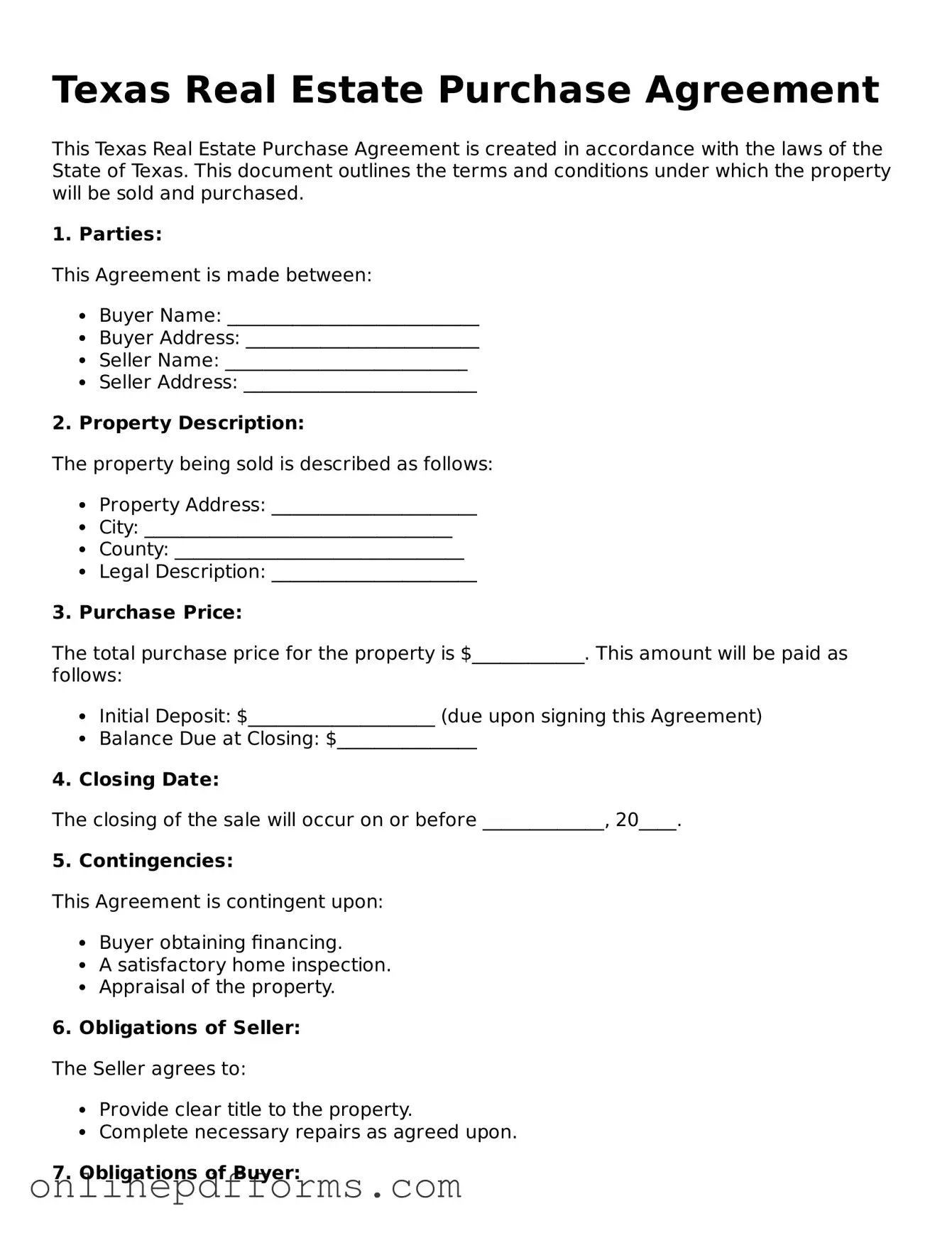The Texas Real Estate Purchase Agreement is similar to the Residential Purchase Agreement, which is commonly used in many states. Both documents serve the purpose of outlining the terms and conditions under which a buyer agrees to purchase a property from a seller. They detail important aspects such as the purchase price, financing arrangements, and contingencies. Additionally, both agreements require signatures from both parties to become legally binding, ensuring that each party understands their rights and obligations throughout the transaction process.
Another document that shares similarities is the Commercial Purchase Agreement. Like the Texas Real Estate Purchase Agreement, this document is used in real estate transactions but focuses on commercial properties rather than residential ones. It includes clauses related to zoning, business use, and environmental assessments, which are crucial for commercial transactions. Both agreements provide a framework for negotiations and help protect the interests of both buyers and sellers.
The Offer to Purchase Agreement is also comparable. This document is typically used when a buyer expresses interest in purchasing a property, serving as a formal offer to the seller. It outlines the terms the buyer is willing to accept, including the price and any conditions that must be met for the sale to proceed. Similar to the Texas Real Estate Purchase Agreement, it is a crucial step in the transaction process and can lead to the creation of a more detailed purchase agreement once both parties agree on the terms.
The Lease Purchase Agreement is another related document. This agreement allows a tenant to lease a property with the option to buy it later. It combines elements of both leasing and purchasing, making it unique. However, like the Texas Real Estate Purchase Agreement, it includes terms related to the sale price, financing, and conditions for the purchase, ensuring that both parties understand their responsibilities during the lease period and at the time of purchase.
The Option to Purchase Agreement shares similarities as well. This document gives a buyer the right, but not the obligation, to purchase a property at a later date for a specified price. It outlines the terms of the option, including how long the buyer has to exercise it. Both this agreement and the Texas Real Estate Purchase Agreement establish clear expectations and timelines for the transaction, protecting the interests of both parties involved.
The Seller Financing Agreement is another document that relates closely to the Texas Real Estate Purchase Agreement. In this case, the seller provides financing to the buyer, allowing them to purchase the property without going through a traditional lender. This agreement details the terms of the financing arrangement, including interest rates and payment schedules. Both documents are essential in clarifying the financial aspects of the transaction and ensuring that both parties are on the same page regarding payment obligations.
Lastly, the Real Estate Listing Agreement is relevant as well. While this document primarily serves the seller by outlining the terms under which a real estate agent will market the property, it shares common elements with the Texas Real Estate Purchase Agreement. Both documents are integral to the real estate transaction process, as they set forth the expectations and responsibilities of the parties involved. The Listing Agreement ensures that the seller’s interests are represented while the Purchase Agreement focuses on the terms of the sale itself.
